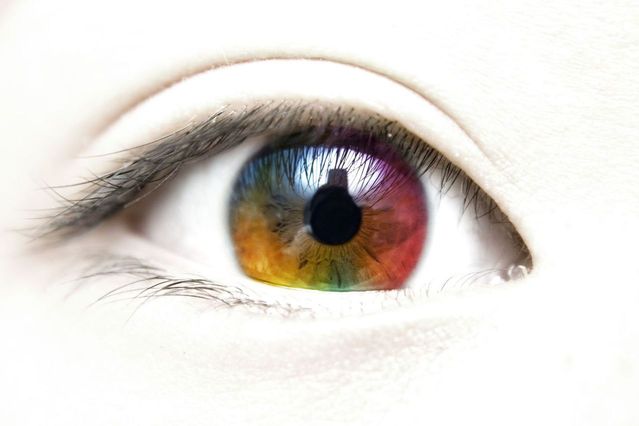INDIANAPOLIS–(BUSINESS WIRE)–Aug. 24, 2015– According to the American Optometric Association (AOA), 80 percent of classroom learning takes place visually. In addition, one in four school-aged children has vision problems that may affect their ability to learn in school1. Since the beginning of a new school year is here, this is the perfect time for parents to schedule an appointment with their child’s eye care provider.
“Numerous studies show that vision is closely linked to the learning process,” said Dr. Richard Hom, optometric director for Anthem. “Children and teens that have undetected vision problems will usually have trouble with their schoolwork. Many times, young children won’t complain about vision problems because they don’t know what normal vision looks like. However, a routine eye exam can uncover vision problems that a child or teen may have. And, since August is Children’s Eye Health and Safety Month, this is a great time to schedule the exam.”
Dr. Hom suggests the following tips to make sure children and teens are visually prepared for the new school year:
• Watch Your Child’s Behavior. Children and teens with undetected vision problems are sometimes inaccurately diagnosed with attention deficit disorder (ADD) or attention deficit hyperactivity disorder (ADHD)2. There are some behaviors that are often telltale signs that a child or teen might be experiencing vision problems, including:
• Holding reading materials too close to the eyes
• Using fingers to trace words when reading
• Exhibiting a lack of attention or fatigue in school
• Constantly rubbing the eyes and/or squinting, complaining about headaches
• Frequently turning or tilting the head
• Covering one eye to read or watch T.V.
• Sitting too close to the T.V.
• Skipping lines or losing their place when reading
• Showing extreme sensitivity to light
• Having irritated or teary eyes
• Get An Annual Eye Exam. The AOA suggests that infants have their first comprehensive eye exam at 6 months old. After that, children should have another eye exam at age 3, as well as right before they enter the first grade (at age 5 or 6). For school-aged children, the AOA recommends an eye exam every two years if no vision correction is needed. However, children who need glasses or contact lenses should be examined annually or as recommended by their optometrist or ophthalmologist.3 Many schools conduct vision screenings for students. Although vision screenings are helpful in determining a child’s ability to see letters clearly, they shouldn’t be used as a replacement for a full eye exam. Parents that have benefits under the Affordable Care Act (ACA) should remember that pediatric vision coverage is one of the 10 essential health benefits (EHBs). The pediatric vision services that are covered as an EHB include annual exams, glasses (both lenses and frames) and contact lenses instead of glasses for individuals up to 19 years old (up to 21 in Kentucky).
• Prepare Your Child. Remember to take time to talk with young children about what will happen during the exam. Let them know that they will be asked to identify various objects, such as letters, pictures or shapes. Also let them know that the eye doctor may put drops in their eye, but they won’t hurt. Be honest with your child about what to expect. This will make the exam a more pleasant experience.
• Know The Typical Tests. A comprehensive exam for older children and teens can take an hour or more, depending on the number and complexity of tests that are required to evaluate their vision and the health of their eyes. Here’s a list4 of the eye and vision tests that can be expected during a routine comprehensive eye exam:
• Retinoscopy: This test may be performed early in the exam so the eye doctor can obtain an approximation of an eyeglass prescription, Visual Acuity Tests: This measures the sharpness of a person’s vision, Color Blindness Test: This is a screening test that checks color vision, Cover Test: This is a test that evaluates how a person’s eyes work together, Refraction Test: This is a test that helps determine the exact eyeglass prescription, Autorefractors and Aberrometers: The eye doctor may use an autorefractor or an aberrometer to automatically estimate the lens prescription, Slit-lamp Examination: This exam gives the eye doctor a highly magnified view of the structures of the eye so they can thoroughly evaluate how healthy the eyes are and detect signs of infection or disease, Glaucoma Test: This measures the pressure inside the eyes. The “puff-of-air” test, also known as non-contact tonometry, is a common glaucoma test, Pupil Dilation: The pupils are dilated to give an eye doctor a better view of the eye’s internal structures, Visual Field Test: The eye doctor uses this test to check for the possible presence of blind spots in a person’s peripheral or “side” vision.
Sources:
1. Prevent Blindness America.
2. American Optometric Association website. Children’s Vision: The Equation is Simple: Good Vision= Better Learning.
3. All About Vision: Eye Exams for Children, Heiting, OD, Gary
4. All About Vision, What to Expect during a Comprehensive Eye Exam, Heiting, OD, Gary and OD, Palombi, Jennifer

